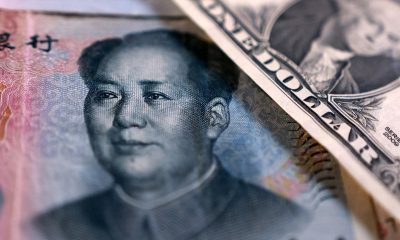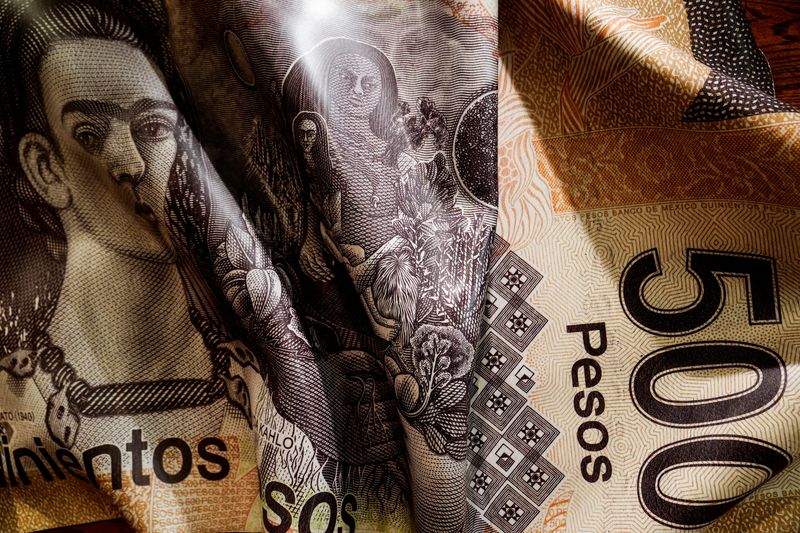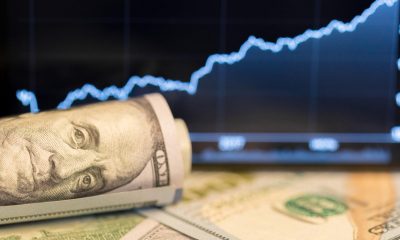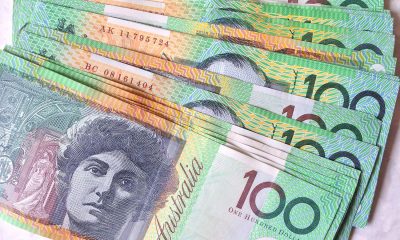Forex
U.S. dollar’s struggles continue as markets brace for post-Thanksgiving buzz


© Reuters. FILE PHOTO: A bank employee counts U.S. dollar notes at a Kasikornbank in Bangkok, Thailand, January 26, 2023. REUTERS/Athit Perawongmetha
By Samuel Indyk and Rae Wee
LONDON (Reuters) -The U.S. dollar began the last week of November on the back foot and was on track for its biggest monthly drop in a year as traders eyed fresh economic cues in the week ahead to determine the future path of policy rates.
A postponed OPEC+ meeting, the release of the Federal Reserve’s tracked measure of inflation alongside consumer prices data in the euro zone and Australia fill this week’s calendar, which will also see a rate decision from the Reserve Bank of New Zealand and Chinese PMI data.
The , which measures the currency against six major peers, slipped as much as 0.2% to 103.21 and was headed for a monthly loss of more than 3%, its worst performance in a year.
“Expectations are that U.S. rates have peaked which suggests it’s time to get out of the dollar,” said Colin Asher, senior economist at Mizuho Bank.
“U.S. equities have now completed four weeks in a row of gains and that’s also weighing on safe-haven demand for the dollar,” Asher said.
Traders, returning from the Thanksgiving lull late last week, continued to eye a peak in U.S. rates and turned their attention to when the first rate cuts could come, with this week’s release of U.S. core PCE prices likely to offer more clues on the Fed’s next steps.
“Insofar as CPI inflation rates across much of the G10 are still above central bank targets, there is a strong incentive for policymakers to support the ‘higher for longer’ theme since higher market rates will help in the battle against inflation,” said Jane Foley, senior FX strategist at Rabobank.
“Investors, however, are looking through this policy and appear increasingly pre-occupied about betting on the timing and pace of rate cuts next year.”
Market pricing shows a roughly 25% chance that the Fed may begin easing monetary policy as early as March, according to the CME FedWatch tool.
Elsewhere, the British pound rose against the weaker dollar to a more than two-month high of $1.2644, extending its gains from last week following data showing that British companies unexpectedly reported a marginal return to growth in November after three months of contraction.
“The most recent PMI data were good in the UK, implying that things are not as quite bleak as they seemed,” Mizuho’s Asher said.
The pound was up over 3.9% for the month, on track for its largest monthly gain since a more than 5% rise in November last year.
The dollar fell 0.4% to 148.885 yen, while the euro gained 0.2% to $1.0954.
The Australian dollar climbed to a more than three-month high of $0.6608, while the edged 0.3% higher to $0.6098 before the RBNZ interest rate decision on Wednesday, where the central bank is seen keeping rates unchanged at 5.5%, as they have been since the last adjustment in May.
In China, the yuan slipped after the official midpoint snapped five straight sessions of strengthening, with the last at 7.1523 per dollar.
Its offshore counterpart fell 0.1% to 7.1582 per dollar.
Prior to market opening, the People’s Bank of China set the midpoint rate, around which the yuan is allowed to trade in a 2% band, at 7.1159 per dollar, 8 pips weaker than the previous fix of 7.1151.

 Forex3 years ago
Forex3 years agoForex Today: the dollar is gaining strength amid gloomy sentiment at the start of the Fed’s week

 Forex3 years ago
Forex3 years agoUnbiased review of Pocket Option broker

 Forex3 years ago
Forex3 years agoDollar to pound sterling exchange rate today: Pound plummeted to its lowest since 1985

 Forex3 years ago
Forex3 years agoHow is the Australian dollar doing today?

 Cryptocurrency3 years ago
Cryptocurrency3 years agoWhat happened in the crypto market – current events today

 World3 years ago
World3 years agoWhy are modern video games an art form?

 Commodities3 years ago
Commodities3 years agoCopper continues to fall in price on expectations of lower demand in China

 Economy3 years ago
Economy3 years agoCrude oil tankers double in price due to EU anti-Russian sanctions


























